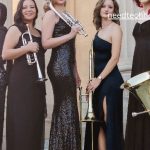Chinese memory chipmaker ChangXin Memory Technologies (CXMT) is preparing for a high-profile initial public offering (IPO) in Shanghai, targeting a valuation of up to 300 billion yuan ($42.1 billion). The listing, expected as early as the first quarter of next year, marks a major step in China’s mission to build a self-sufficient and globally competitive semiconductor industry.
- A Strategic Move for China’s Semiconductor Vision
- Growing Investor Confidence in China’s Chip Sector
- Competing with Global Memory Leaders
- Strengthening China’s Technological Independence
- Industry Shifts and Market Dynamics
- Expansion and Technological Advancements
- Financial Strength and Future Growth Plans
- Opportunities and Challenges Ahead
- Broader Implications for the Global Market
- Frequently Asked Questions:
- What is CXMT and why is its IPO significant?
- How much does CXMT plan to raise through its IPO?
- When will CXMT’s Shanghai IPO take place?
- How does CXMT’s IPO support China’s semiconductor ambitions?
- What challenges does CXMT face in the global chip market?
- What type of chips does CXMT manufacture?
- What is High Bandwidth Memory (HBM) and why is it important to CXMT?
- Conclusion
Read More: http://needtechhelp.com/zelenskyy-seeks-a-vital-seat-at-the-table-hopes/
A Strategic Move for China’s Semiconductor Vision
Founded in 2016 with strong government support, CXMT has become a key pillar of China’s national strategy to strengthen its position in the global DRAM (Dynamic Random-Access Memory) market—a space long dominated by giants from South Korea, Japan, and the United States. The planned IPO underlines not only CXMT’s rapid rise but also Beijing’s determination to reduce reliance on foreign technology amid intensifying global tech competition.
CXMT’s offering is expected to raise between 20 billion and 40 billion yuan, with one estimate placing the figure closer to 30 billion yuan. The company could release its prospectus as early as November, depending on market conditions and regulatory approval. Insiders caution that final details, including valuation and offer size, may still shift based on investor sentiment and demand.
Growing Investor Confidence in China’s Chip Sector
The timing of CXMT’s listing coincides with renewed investor enthusiasm for China’s semiconductor sector. The CSI CN Semiconductor Index has surged by nearly 49% so far this year, reflecting optimism about domestic innovation and the government’s push for self-reliance in key technologies.
CXMT’s parent company began official IPO preparations in July, entering what is known locally as the “counselling process.” It has appointed major state-owned investment banks, including China International Capital Corporation (CICC) and CSC Financial, to manage the process. While the company has not publicly commented on the listing, analysts expect it to attract significant domestic interest as Chinese investors increasingly support homegrown tech champions.
Competing with Global Memory Leaders
CXMT’s ambitions extend far beyond the domestic market. The company is investing aggressively to catch up with world leaders such as Samsung Electronics and SK Hynix, which dominate the DRAM industry. A key focus of CXMT’s current R&D drive is high bandwidth memory (HBM)—a specialized, high-performance form of DRAM essential for powering artificial intelligence (AI), supercomputing, and graphics processing units (GPUs) like those used by Nvidia.
CXMT’s investment in HBM reflects China’s growing commitment to support the rapidly expanding AI ecosystem. These advanced memory chips enable faster data transfer and greater efficiency—crucial components for AI model training, large data processing, and next-generation computing technologies.
Strengthening China’s Technological Independence
CXMT’s growth has taken on added significance since U.S. export restrictions were imposed in December, curbing China’s access to advanced HBM chips. The move aimed to slow the country’s AI development by limiting access to the hardware essential for high-performance computing. In response, CXMT has doubled down on domestic innovation, seeking to fill the technology gap through local research, development, and large-scale production.
Industry experts note that CXMT’s progress is now vital to China’s broader semiconductor strategy. The nation is investing billions of dollars in talent, manufacturing, and equipment to develop its own supply chain and reduce exposure to foreign export controls. As a result, CXMT’s IPO is not just a financial event—it is a symbol of China’s determination to secure its technological future.
Industry Shifts and Market Dynamics
CXMT’s public offering comes at a time of rapid change in the global memory chip landscape. U.S.-based Micron Technology, for example, is reportedly exiting China’s server chip business two years after Beijing restricted its products in critical infrastructure. Meanwhile, the worldwide race to develop AI-focused semiconductors is tightening the supply of traditional memory chips used in smartphones, computers, and data centers—creating new opportunities for DRAM manufacturers like CXMT.
The demand surge has pushed chipmakers to expand production and explore advanced technologies. CXMT’s planned listing aims to provide the financial foundation needed to scale operations, enhance R&D capabilities, and accelerate its move into high-margin product categories such as HBM3 and beyond.
Expansion and Technological Advancements
To strengthen its manufacturing capacity, CXMT is building an HBM back-end packaging facility in Shanghai, scheduled to start production by the end of next year. The plant’s initial monthly output is expected to reach around 30,000 HBM wafers, roughly one-fifth of SK Hynix’s current capacity. The company plans to begin mass production of fourth-generation HBM3 chips in 2026, marking an important milestone in its technological roadmap.
Although CXMT remains several years behind global leaders, the progress is significant. According to industry analysts, if CXMT successfully rolls out its 16-nanometer (G4) generation HBM3 chips by late 2026, it will narrow the technological gap with SK Hynix and Samsung—companies that have already begun internal testing for HBM4. Bridging this gap will be essential for China’s competitiveness in the global AI hardware race.
Financial Strength and Future Growth Plans
CXMT’s capital expenditure for 2023 and 2024 is estimated at $6–7 billion, with an expected 5% increase in 2025 if no additional U.S. sanctions are imposed. These investments will be directed toward expanding manufacturing lines, improving chip yield rates, and supporting R&D for next-generation memory products.
The company’s long-term strategy focuses on three pillars: scaling domestic production, enhancing design innovation, and expanding its ecosystem partnerships. This approach not only aligns with China’s industrial policy but also positions CXMT to become a critical supplier in the country’s growing AI and cloud computing sectors.
Opportunities and Challenges Ahead
CXMT’s upcoming IPO represents a rare opportunity for investors to participate in China’s semiconductor growth story. With the government providing substantial support, the company stands at the forefront of the nation’s technology transformation. Its role in the global DRAM market could reshape the competitive balance that has existed for decades.
However, challenges remain. Despite rapid progress, CXMT still lags behind global peers in technology maturity, manufacturing precision, and equipment sourcing. Export controls continue to limit access to advanced lithography tools and materials, which are essential for cutting-edge chip production. Moreover, the company faces the inherent volatility of the semiconductor market, where prices and demand can fluctuate dramatically with global supply cycles.
Analysts also note potential pressure from overcapacity if too many domestic firms expand aggressively at once. To sustain growth, CXMT must balance scale with profitability and ensure its products meet the rigorous standards required by global customers.
Broader Implications for the Global Market
CXMT’s listing has implications that extend well beyond China’s borders. As the company grows, it could challenge the dominance of established memory giants and introduce new competition in pricing and innovation. Its success may also encourage other Chinese semiconductor firms to pursue listings, further fueling the nation’s technology ambitions.
At the same time, the global industry is watching closely. A more competitive Chinese memory sector could disrupt the delicate balance of global supply and demand, potentially influencing pricing strategies, investment flows, and even international trade policies related to semiconductors.
Frequently Asked Questions:
What is CXMT and why is its IPO significant?
ChangXin Memory Technologies (CXMT) is a leading Chinese memory chip manufacturer specializing in DRAM technology. Its planned $42 billion IPO in Shanghai represents a major milestone in China’s mission to achieve semiconductor self-sufficiency and reduce reliance on foreign chipmakers.
How much does CXMT plan to raise through its IPO?
CXMT aims to raise between 20 billion and 40 billion yuan (approximately $2.8 – $5.6 billion) from its public offering, depending on market demand and valuation adjustments before the official launch.
When will CXMT’s Shanghai IPO take place?
The company plans to go public as early as the first quarter of next year, with its official prospectus expected to be unveiled for investors soon, possibly by November.
How does CXMT’s IPO support China’s semiconductor ambitions?
The IPO strengthens China’s broader strategy to build a domestic semiconductor ecosystem capable of competing globally. By raising capital, CXMT can expand production, enhance R&D, and accelerate innovation in high-bandwidth memory (HBM)—a technology vital for AI and high-performance computing.
What challenges does CXMT face in the global chip market?
Despite strong growth, CXMT faces hurdles such as U.S. export restrictions, limited access to advanced manufacturing tools, and competition from industry leaders like Samsung, SK Hynix, and Micron. Bridging this technological gap will be key to its long-term global success.
What type of chips does CXMT manufacture?
CXMT specializes in Dynamic Random-Access Memory (DRAM) chips used in smartphones, computers, servers, and artificial intelligence (AI) applications.
What is High Bandwidth Memory (HBM) and why is it important to CXMT?
HBM is an advanced type of memory chip that allows faster data transfer and energy efficiency. CXMT’s investment in HBM positions it to support AI processors and compete in high-performance computing markets.
Conclusion
CXMT’s upcoming $42 billion IPO in Shanghai marks a defining moment in China’s pursuit of semiconductor independence. More than just a financial milestone, it symbolizes the country’s determination to stand shoulder to shoulder with global chip leaders like Samsung, SK Hynix, and Micron. With massive investments in high-bandwidth memory (HBM) and a clear focus on AI-driven innovation, CXMT is positioning itself as a central player in the future of advanced computing.











